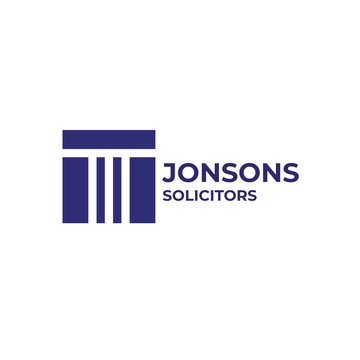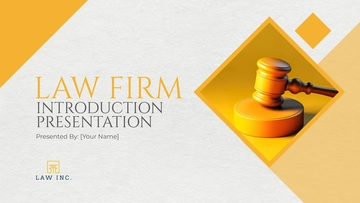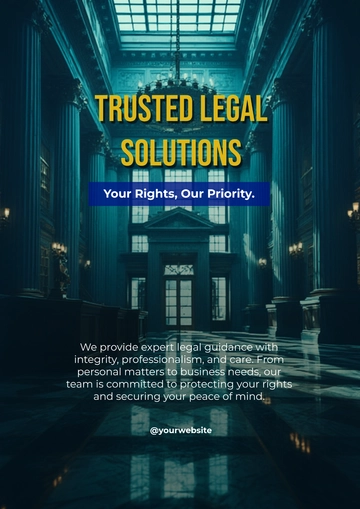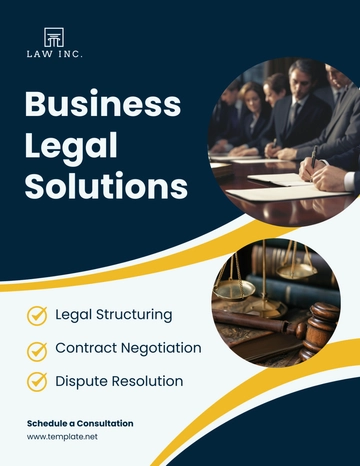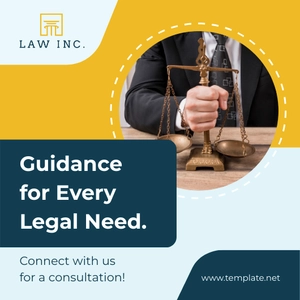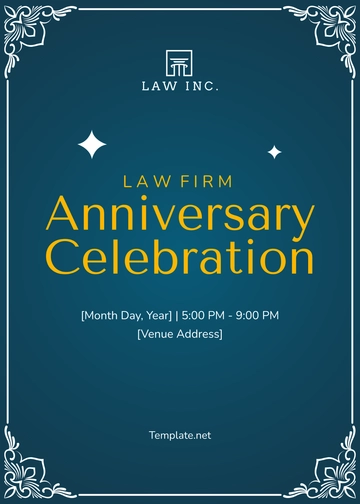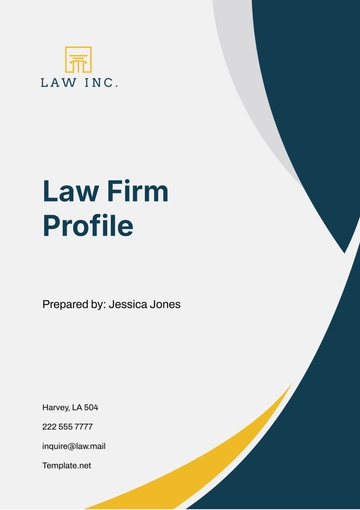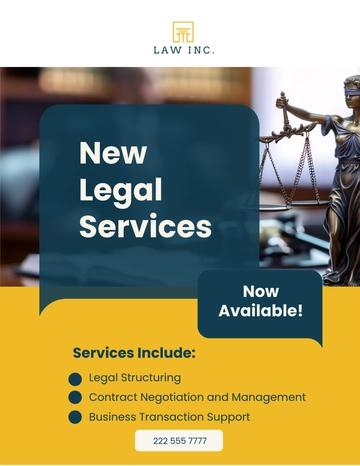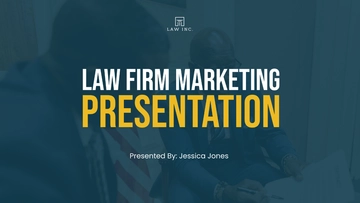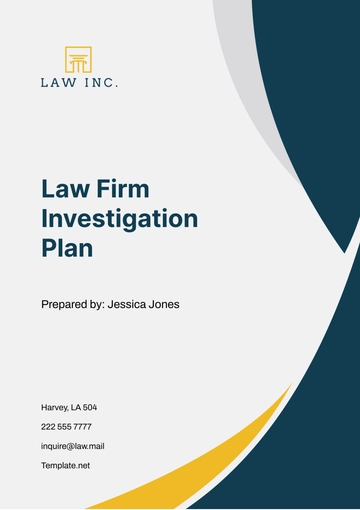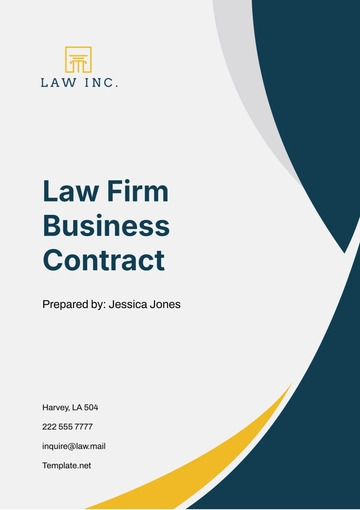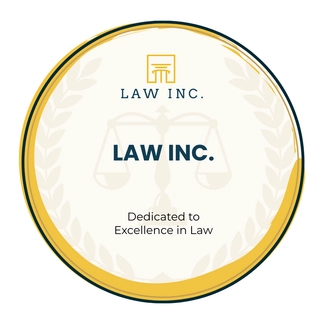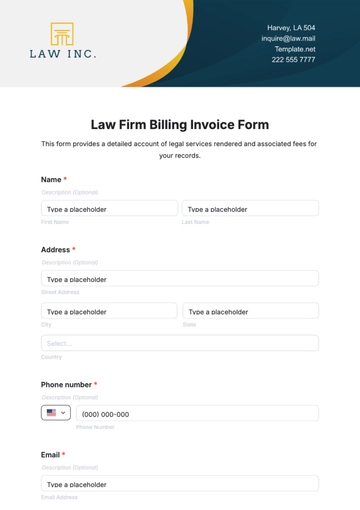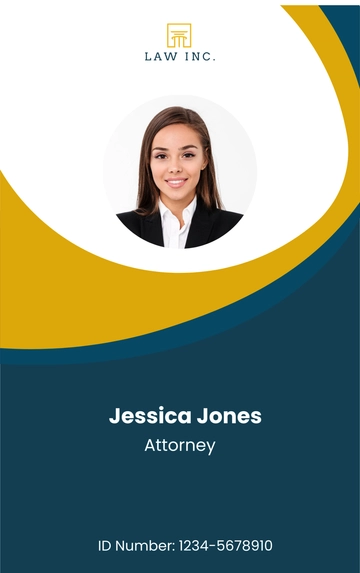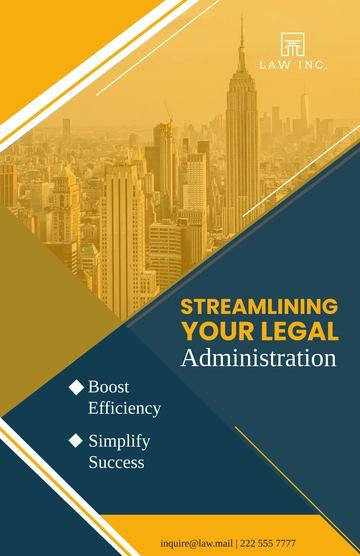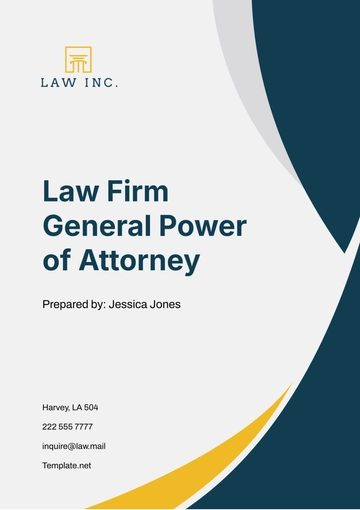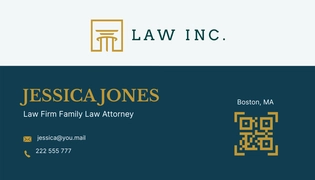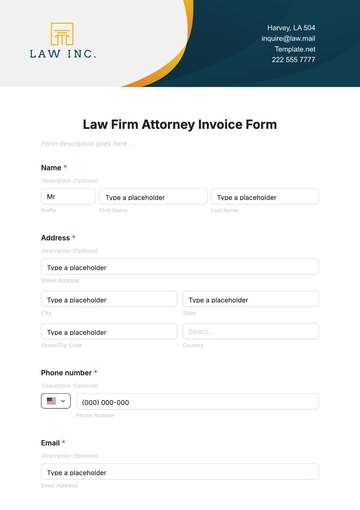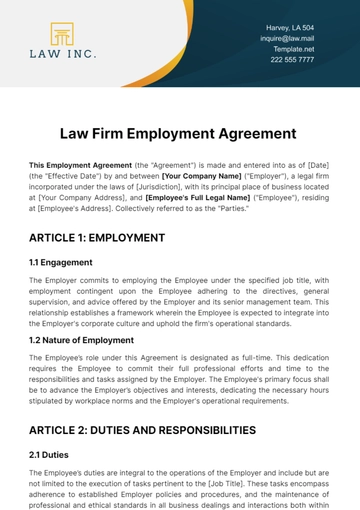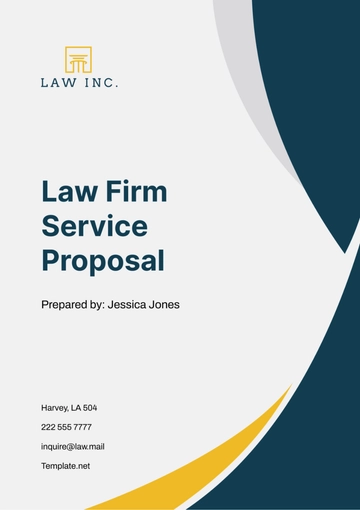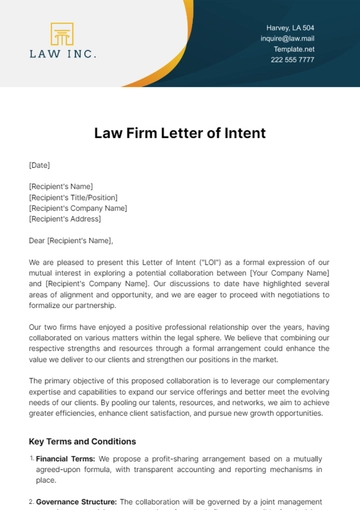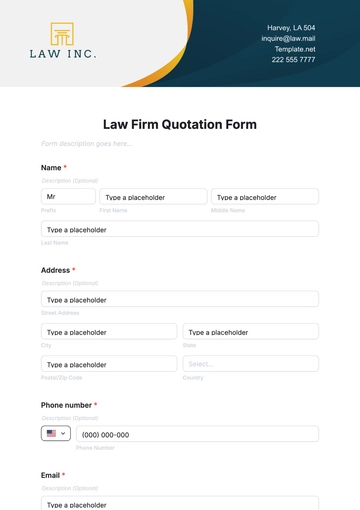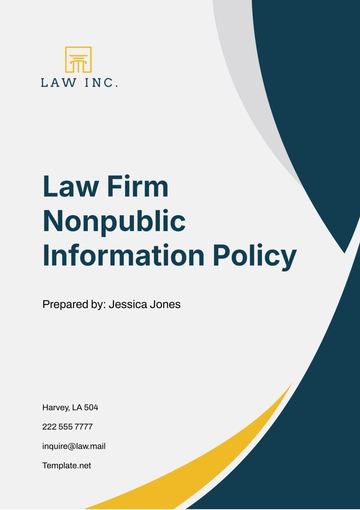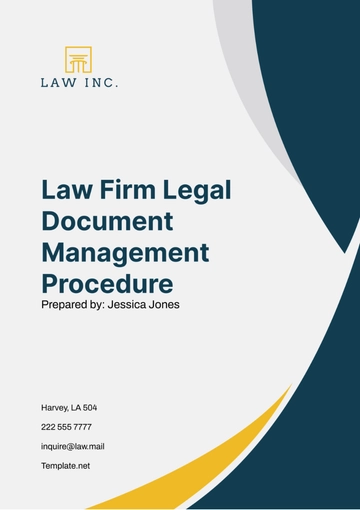Free Law Firm Management Policy
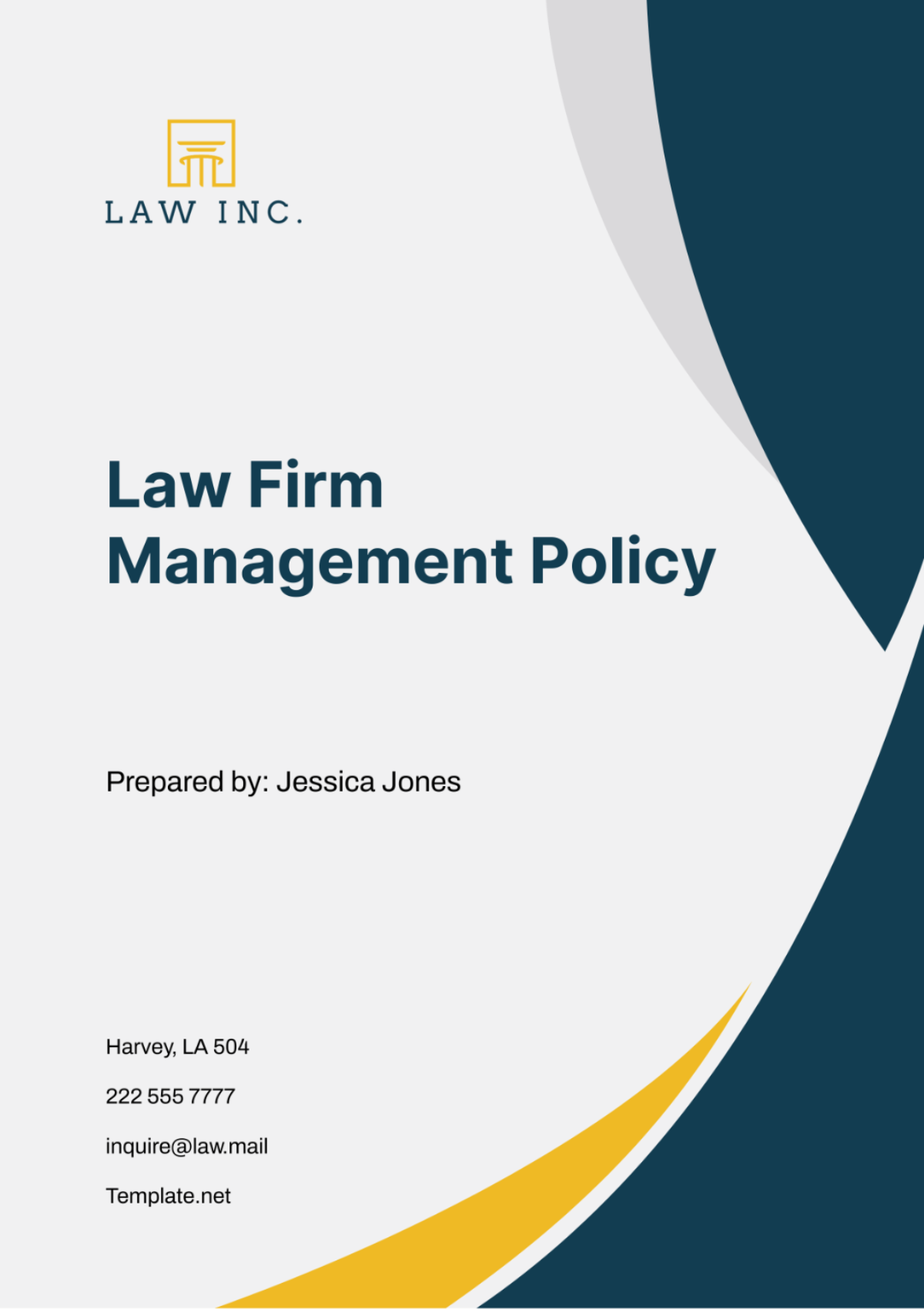
I. Introduction
Effective management is crucial for the success and high performance of any organization, particularly in the legal field. This Law Firm Management Policy sets forth the guiding principles and operational procedures for [YOUR COMPANY NAME], aimed at ensuring clarity, efficiency, and ethical integrity in all aspects of its operations. This document delineates the responsibilities essential for our daily and long-term success, facilitating our firm's ability to achieve its objectives while sustaining a professional reputation. Adherence to these guidelines is critical for promoting operational excellence and accountability within our team.
II. Organizational Structure and Responsibilities
The organizational structure at [YOUR COMPANY NAME] is designed to optimize the legal and administrative functions by defining clear roles and responsibilities. This hierarchical arrangement ensures efficient management and decision-making processes within the firm.
Table: Organizational Roles and Responsibilities
Position | Responsibility | Reporting To |
|---|---|---|
Managing Partner | Oversees overall firm management, sets strategic direction, makes major decisions. | Board of Directors |
Partners | Manages client relationships, oversees case management, mentors junior lawyers. | Managing Partner |
Associates | Conducts case research and management, prepares documents, assists in trials. | Partners |
Paralegals | Provides research support, handles documents, manages client communications. | Associates |
Administrative Staff | Manages general office operations, performs clerical work, schedules client appointments. | Office Manager |
This structured approach enhances accountability and streamlines communication channels within the firm, facilitating better coordination and ultimately leading to more effective legal service delivery.
III. Decision-Making Process
At [YOUR COMPANY NAME], our decision-making process is rigorously structured to ensure consistency and accountability. This process includes:
Initial Assessment: Every decision starts with an initial assessment by the responsible attorney to determine the necessary steps and implications for routine decisions.
Consultation Requirements: For critical decisions or those requiring specialized knowledge, consultation with a partner or a team of experts is mandatory.
Financial Oversight: Decisions that involve significant financial outlay are forwarded to the finance committee for approval to ensure fiscal responsibility.
Strategic Decisions: Major strategic decisions are subject to deliberation and ratification by the board of directors, ensuring alignment with the firm's long-term objectives and ethical standards.
This meticulous approach ensures that every decision made within the firm is well-considered, justified, and aligned with our strategic goals.
IV. Ethical Standards and Conduct
Ethical integrity is at the core of all operations at [YOUR COMPANY NAME]. We adhere to the highest ethical standards as outlined by the ABA Model Rules of Professional Conduct, which include:
Confidentiality: We are committed to maintaining the confidentiality of all client information, a fundamental component of client trust and legal compliance.
Conflict of Interest: All employees are required to disclose any potential conflicts of interest immediately. These are then managed according to strict internal guidelines to prevent any bias or unfair advantage.
These ethical practices are integral to our operations and critical in maintaining the trust and reliability that our clients expect from us.
V. Communication and Information Management
Effective communication and stringent information management are pivotal to the operational success of [YOUR COMPANY NAME]:
Professional Communication: All interactions with clients, colleagues, and the court are conducted with the utmost professionalism and clarity. This ensures that all parties are well-informed and misunderstandings are minimized.
Secure Information Transmission: We employ secure channels for all communications, particularly those involving sensitive or confidential information, to safeguard client data against unauthorized access or breaches.
Regular Updates and Meetings: Regular updates and scheduled meetings are integral to keeping all team members informed of ongoing cases and developments within the firm. This continuous flow of information enhances collaboration and efficiency.
Document Management System: Our state-of-the-art document management system organizes and stores documents electronically. This system not only provides easy access and enhances security but also ensures compliance with legal standards and efficiency in document retrieval and management.
Through these measures, [YOUR COMPANY NAME] ensures that communication and information handling are handled securely and efficiently, supporting our firm’s commitment to excellence and integrity in legal practice. These standards and practices are not just protocols but are central to the ethos of our firm, guiding us in delivering exceptional legal services.
VI. Risk Management
Effective risk management is crucial to the safety and stability of [YOUR COMPANY NAME] and our clients. Our comprehensive risk management strategy includes several key components:
Regular Legal Audits: We conduct thorough audits to detect and address potential legal vulnerabilities within the firm. These audits review compliance with laws and regulations, the adequacy of legal documentation, and the effectiveness of legal strategies employed.
Comprehensive Risk Assessments: Before taking on new cases or engaging with new clients, comprehensive risk assessments are carried out. These assessments help in understanding the potential legal implications and ensuring that our firm is well-prepared to handle the cases effectively without exposing itself to undue risk.
Insurance Coverage: To protect against unforeseen liabilities, our firm maintains up-to-date and comprehensive insurance policies. This includes professional malpractice and general liability insurance, providing a financial safety net and peace of mind for both our staff and our clients.
Mandatory Training Sessions: All employees must participate in regular training sessions focused on risk awareness and mitigation strategies. These sessions equip our team with the knowledge to identify risks early and take appropriate action, thus reducing potential exposures.
These proactive measures are vital in minimizing risks and safeguarding our firm’s reputation for reliability and trust.
VII. Resource Allocation and Budgeting
Resource allocation and budgeting at [YOUR COMPANY NAME] are meticulously planned to ensure efficient use of resources, aligning with the firm's strategic objectives and operational needs. The following table outlines the allocation of our budget across various departments:
Table: Resource Allocation and Budget
Department | Budget Percentage | Allocated Resources |
|---|---|---|
Legal Services | 55% | Case filings, research tools, external counsel fees. |
Client Management | 25% | Customer relationship management systems, client engagement events. |
Operations | 10% | Office supplies, utilities, premises costs. |
Marketing | 10% | Advertising, website maintenance, public relations. |
This structured budgeting framework ensures that every department is adequately funded to perform optimally, supporting the firm’s broader strategic goals and ensuring operational excellence.
VIII. Conflict Resolution
At [YOUR COMPANY NAME], maintaining a harmonious work environment is critical, and effective conflict resolution is a cornerstone of our organizational culture. Our approach to conflict resolution involves several stages:
Early Identification: Conflicts are identified at the earliest possible stage to prevent escalation. Recognizing issues early allows for more effective and less disruptive resolutions.
Direct Communication: We encourage direct communication between the parties involved. This approach fosters a better understanding of different perspectives and often leads to amicable solutions without the need for further intervention.
Consultation of Policies and Legal Standards: In managing conflicts, we consult relevant policies and legal standards to ensure that our resolution strategies are compliant and uphold the highest legal and ethical standards.
Mediation: If direct resolution is not feasible, we facilitate mediation meetings involving a neutral third party. This helps in achieving a fair and unbiased resolution to conflicts.
Documentation and Follow-Up: All conflict resolutions are fully documented, detailing the outcomes and any agreements made. Follow-up procedures are implemented to ensure that resolutions are adhered to, maintaining long-term harmony and compliance.
This structured conflict resolution process ensures that conflicts are resolved in a manner that is fair, efficient, and upholds the firm’s integrity and cooperative culture. Through these detailed processes and structured approaches, [YOUR COMPANY NAME] continues to strive for excellence in managing operational risks, allocating resources effectively, and resolving conflicts in a way that fosters a positive and productive work environment.
IX. Conclusion
The guidelines and procedures outlined in this document are crafted to ensure the smooth operation of [YOUR COMPANY NAME] and uphold our commitment to excellence in the practice of law. By adhering to these policies, we not only promote efficiency and compliance within our firm but also enhance our professionalism and reliability in the eyes of our clients and the legal community. Let us commit to these standards and strive for the highest level of integrity and service.
- 100% Customizable, free editor
- Access 1 Million+ Templates, photo’s & graphics
- Download or share as a template
- Click and replace photos, graphics, text, backgrounds
- Resize, crop, AI write & more
- Access advanced editor
Introducing the Law Firm Management Policy Template by Template.net. Unlock the power of efficient management with this fully editable and customizable resource. Crafted to streamline operations, it empowers firms to establish robust policies tailored to their unique needs. Harness the potential of our AI editor to optimize processes and drive success. Elevate your firm's management strategies today with this comprehensive template.
